The Low Countries. Jaargang 6
(1998-1999)– [tijdschrift] The Low Countries–
[pagina 255]
| |
The Tradition of the Lonely Wandering Eye
| |
[pagina 256]
| |
was his international breakthrough, but it made no difference to the often unassuming and always friendly way he approaches people. | |
Drawn along by the timesThe misconception which for a long time cast a shadow over a clear understanding of Van der Keuken's work in the Netherlands lies in the word ‘documentary’ used to describe it. To compare his films with conventional documentaries such as those that emerged from the renowned Holland School in the fifties, is like comparing free jazz to classical music.Ga naar eind1. Van der Keuken plays and improvises with images and sounds just as the jazz musician does with rhythms and styles, the poet with words and sounds, the painter with colours and forms. His work is never really abstract, and always makes use of reality as it is, but transforms it into something entirely different. It has no linear narrative and no chronological structure, and sometimes it is circular like the ripples from a stone in water, or zigzags like a memory darting round the brain in an infinite chain of fragments evoking and then supplanting each other. Johan van der Keuken started out as a photographer. In the fifties he took romantic and poetical portraits of his friends, both male and female. They are pictures, collected in the books We are Seventeen (Wij zijn zeventien) and Behind Glass (Achter Glas), of a protected inner world he left behind to go and study photography in Paris. That was where he came face to face Johan van der Keuken, Time (De Tijd, 1983).
| |
[pagina 257]
| |
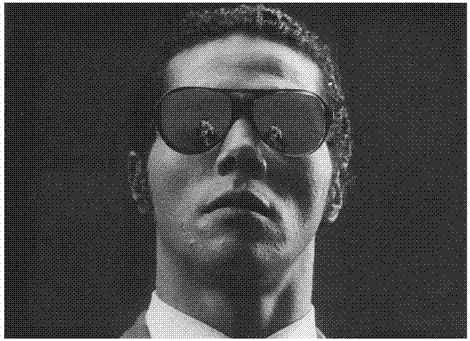 Johan van der Keuken, Beauty (1970).
with the outside world. He saw oas supporters, opponents of Algerian independence, marching under the Arc de Triomphe with their banners, and observed that old ties were being broken and people were moving about in loneliness against the backdrop of the metropolis. His view became that of the concerned outsider who sees himself being drawn along by the times. In 1963 his book Mortal Paris (Paris mortel) appeared. Even today he feels that his later film work is linked to that book, oriented as it was towards a social reality. Back in the Netherlands, he felt the influence of free jazz, which was just emerging. This, as he put it so enthusiastically, was a form of music that surpassed all cultural conventions. In what other way could people communicate with each other in normal, polite terms in this world, was his conclusion. You could follow the Vietnam war on the television in your living room every day. Images to which the only response was a raucous cry. A symbolic violence was set in counterpoint to this physical violence, a means for the artist to react to the world around him. Free jazz set off at a high emotional intensity, which became ever higher in the course of improvisation. Johan van der Keuken pursued the same effect in his film Beauty (1970): setting off at a high level and going ever higher. ‘You can't scream any louder, but you do it anyway.’ Beauty deals with a young man's quest for reality. He tries to understand a world he cannot grasp, to capture the things that escape him. In three other films, Speed: 40-70 (De Snelheid: 40-70, 1970), The White Castle (Het Witte Kasteel, 1973), and Time (De Tijd, 1983), Van der | |
[pagina 258]
| |
Keuken continued the exploration of the independent expressive power of images, which he had started in A Film for Lucebert (Een Film voor Lucebert, 1967). This portrait of the painter-poet Lucebert formed part of the trilogy Lucebert, Time and Farewell (Lucebert, Tijd en Afscheid) put together in 1994 on the occasion of the artist's death. | |
Reality caughtFrom the seventies onward, Van der Keuken appeared to have moved away from his more accessible film language, seen in such emotive documentaries as Blind Child (Blind Kind, 1964), about children in an institute for the blind, and Beppie (1965), about a bright and precocious Amsterdam girl of working-class background. The uninhibited spontaneity of these films still resounded in Four Walls (Vier Muren, 1965) about the housing shortage in the Amsterdam of the sixties, Big Ben / Ben Webster in Europe (1967) about the tenor saxophonist, and The Spirit of the Age (De Tijdgeest, 1968) about the sixties. But his subsequent films were no longer able to conceal the fact that not only was Van der Keuken recording reality, but that the way he did it was also becoming the point of the work. ‘With,’ according to the film-maker himself, ‘a power that springs from being tremendously moved by what one sees’. Just as the photographer and film-maker's view is coloured by experience and outside influences, it is also determined by his individual points of departure.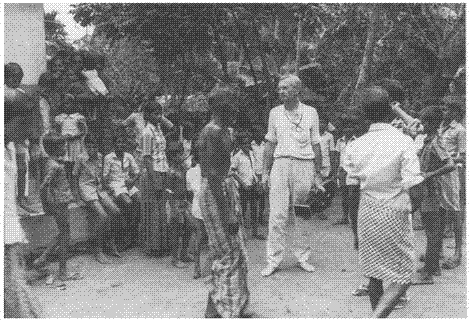 Johan van der Keuken (centre) during the shooting of The Eye above the Well (Het oog boven de put, 1988).
| |
[pagina 259]
| |
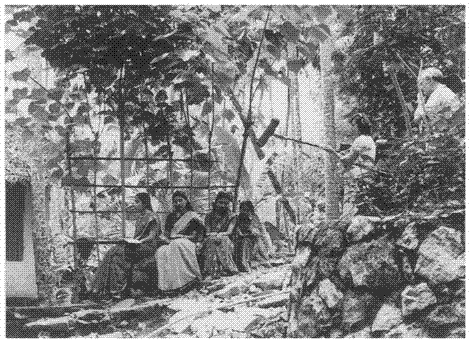 Johan van der Keuken (camera) and his wife Nosh (sound) during the shooting of The Eye above the Well (Het oog boven de put, 1988).
In Van der Keuken's work we find two surprisingly (and confusingly) contrasting points of departure. There is the work of the observer, recording in documentary images what he sees of people and cities. And there is the work in which the creator carries out artificial manipulation, in which every image is given its own significance by means of the division of the planes, the framing, the emphasis on the texture of materials: wooden partitions, stone walls, weathered pebbles. Van der Keuken recognises this dichotomy while at the same time denying it: ‘In my films, mistakenly called documentaries, I always hope to be able to fish a moment of abstraction out of reality, enabling me to generalise on something. And in my so-called artificial films I am often trying to capture a documentary reality.’ The film-maker regards the film The Eye above the Well (Het oog boven de put, 1988), which was shot in India, as a successful attempt to unite the two sorts of film, in a synthesis of the active and the contemplative. His view of the way things slip by makes it seem like Time. The long tracking shots and the horizontal movements of the camera are the same in both films. ‘Those planes moving past there, and then, in “The Eye above the Well”, that wall with a piece of paper stuck on it,’ as Van der Keuken tells us, ‘I hope that this latest film will now release me from this discussion about my two sorts of work. Because I am able simply to observe and at the same time to add something artificial.’ | |
[pagina 260]
| |
 | |
[pagina 261]
| |
The picture that looks backVan der Keuken often tries, by means of the image contained within the frame, to bring about an interaction between the viewer and the viewed. He thinks that the picture should ‘look back’. This happens literally in a scene in The Eye above the Well, when an Indian beggar, no more than an emaciated legless torso, reacts to the film-maker's intent gaze by looking back at him intently. Here too Van der Keuken clearly declares himself to be an intermediary, a presence on which looks are turned: ‘I employ that awful “looking back” to break down the convention of a reality just lying there to be consumed.’ It was on this principle that he based his brilliant film Face Value (1991), which consists of nothing more or less than a long series of close-ups of people from a wide range of countries. Faces that look back at and react to the camera in every possible way, without any directions from the film-maker. His view is determined by a ‘desire for the unattainable’, according to Van der Keuken, ‘an attempt to penetrate behind the eye, because that's where the thoughts are’. In the same way there are thoughts behind the film-maker's eye, ones which select the images and put them in a frame. In Face Value, with a soundtrack full of these people's stories, Johan van der Keuken has made a marvellous portrait of a collection of individuals who together form ‘the family of man’ on the planet Earth. 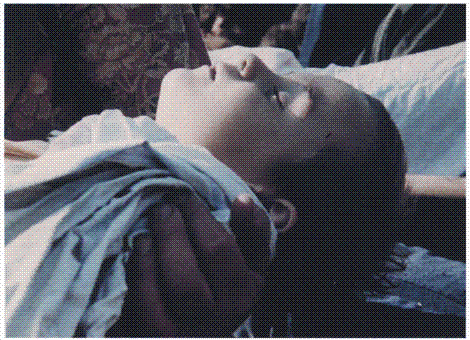 Three stills from Amsterdam Global Village (1996; © Johan van der Keuken)
| |
[pagina 262]
| |
The universe in every moleculeIn narrower confines - that of Amsterdam - and another filmic language, in Amsterdam Global Village (1996), Van der Keuken reports on the multicultural society that has grown up in the Dutch capital. The film looks like an ode to caprice: various storylines intersect each other, seeming to have been picked at random from the abundance of stories Amsterdam hosts. ‘I am on a distant journey in my own city’, announces the film-maker at the start of the film. ‘I know that life is a dream.’ Countless dreams come under review in this four-hour long vortex of images, each one forming a micro-documentary. About a Moroccan courier on a moped; a Bolivian shoemaker; a shrewd Chechen businessman. Van der Keuken travels with them: to a Bolivian mountain village, to shell-shocked Grozny in Chechenya and to Sarajevo and Thailand. Amsterdam Global Village is one big, high-tempo trip through ways of life and types of people, associative, fitful, unpredictable and fascinating. But the small-scale, intimate and experimental also form a substantial part of his work. As in his formal experiment called The Unanswered Question (1986), a short film on the music of Charles Ives, in which the film-maker once more tried to break new ground in his eternal struggle with the flat surface of the camera frame, bounded by its four lines - ‘The beginning of all illusion,’ wrote Van der Keuken at the time, ‘whereby, to me, documentary illusion and acted illusion are in principle no different’. In The Unanswered Question, Johan van der Keuken showed in a different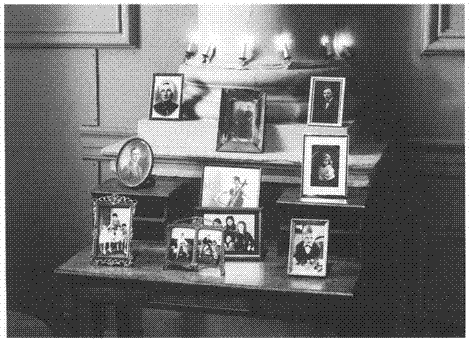 Johan van der Keuken, The Unanswered Question (1986).
| |
[pagina 263]
| |
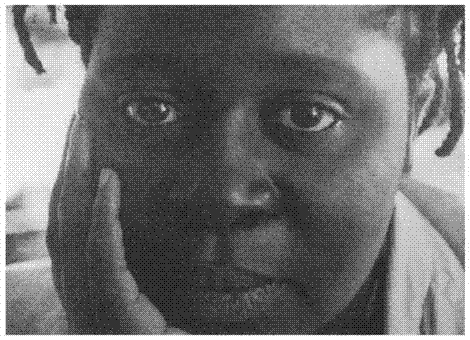 Johan van der Keuken, Face Value (1991).
way a penetrative approach to primary visual facts. Because the immeasurable is also to be found in the minuscule, the astronomer's view is also that of the cell biologist, since the universe is to be found in every molecule. His work will never become totally abstract, but will keep its feet on the ground, rooted in the society and the age in which he lives and which will never leave him indifferent.
gerdin linthorst Translated by Gregory Ball. |
|

